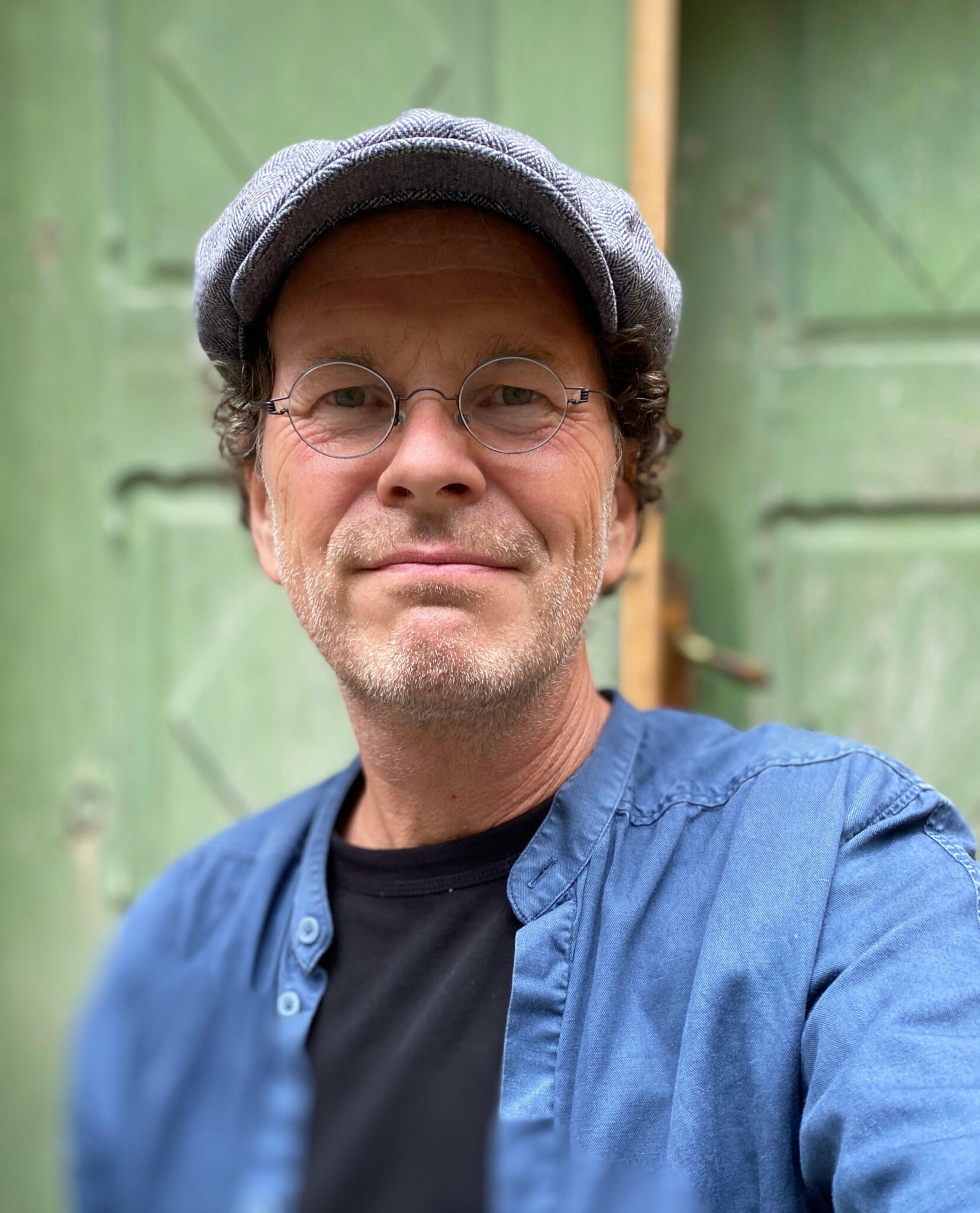The glittering and everlasting slate facade
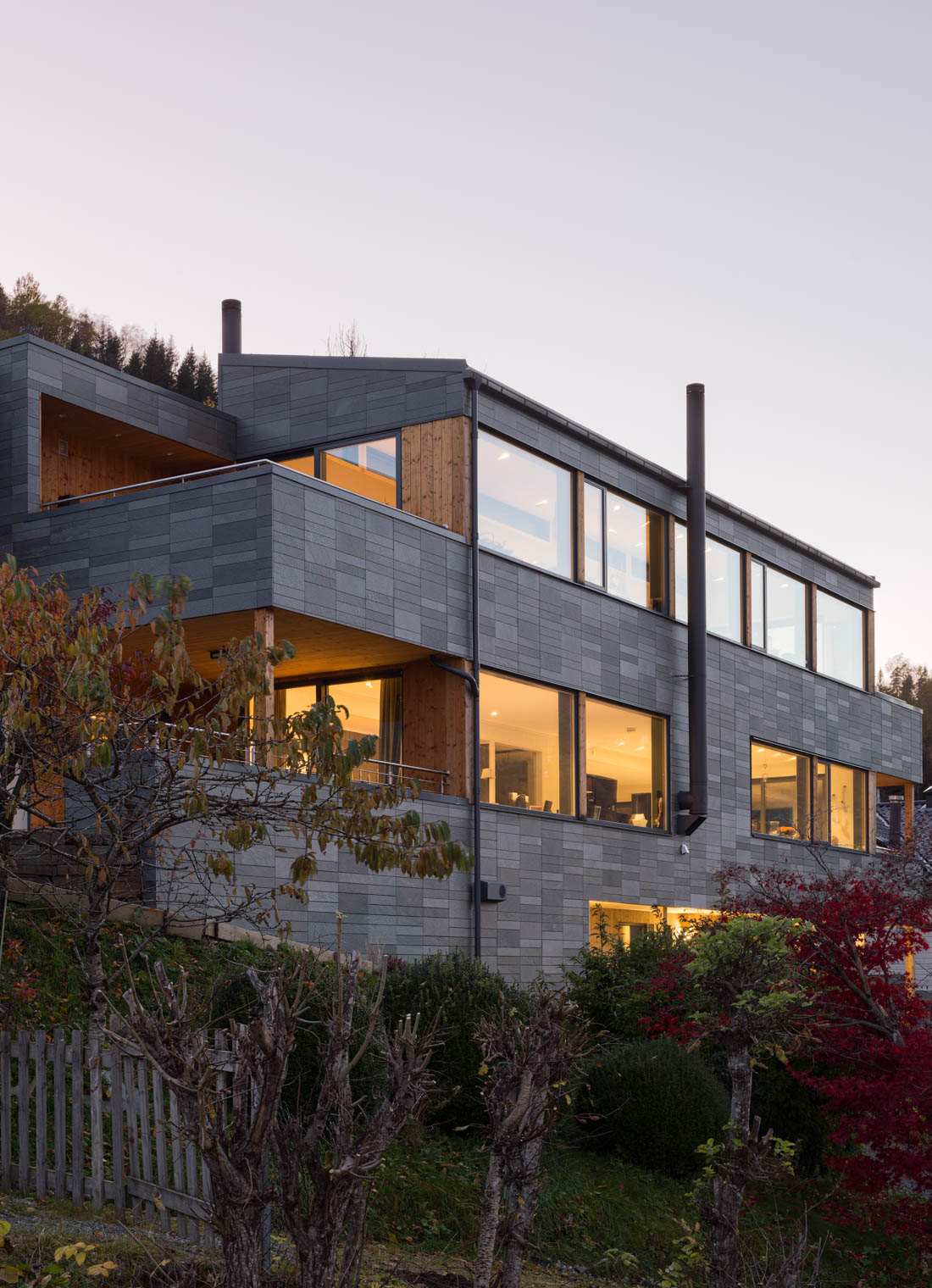
A modern detached house – clad in glittering Offerdal slate – towers upon a slope down towards the Hardangerfjord. Here, tradition and modernity merge in more ways than one.
– Slate has been used as a building material for centuries. For those of us who grew up here, slate is part of our identity. On the other side of the fjord, you will find a quarry that has been in operation since the Middle Ages! Holding onto such traditions is important to me, says Holstad.
.
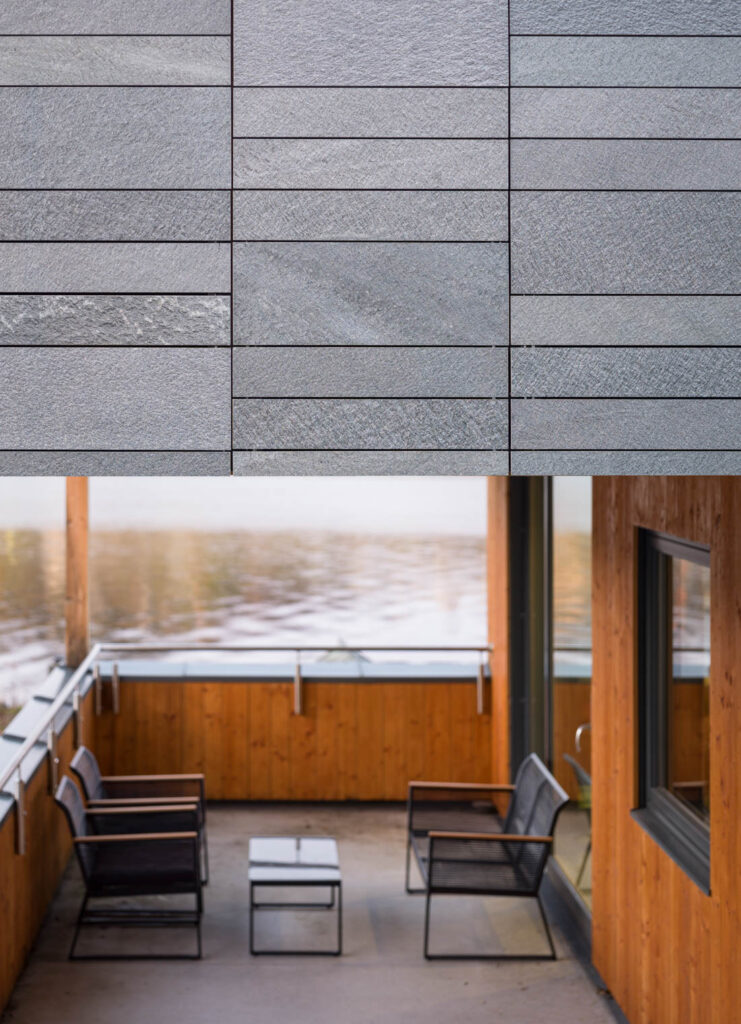
At the same time, he was interested in combining old materials with modern techniques. Just below his house is a boathouse with a slate roof made up of large, traditional square slabs. He could have copied its appearance, but would rather it just rhyme.
‘Times are different now. I wanted to show that it was possible to use this traditional material in a new way. Slate doesn’t have to be reserved to just roofs, and it can provide a tight, modern look if you do it right’, says Holstad.
He worked with an architect to draw up a sketch for the facade. The lines are straight, there is no overlap – and there is no apparent pattern. The flat siding also made a clever installation technique possible.
‘I simply attached them with adhesive. It takes a little patience and precision, but if you do it right, they hold incredibly well. Some people worry that it won’t last, but not one tile has come close to falling off in all these years. I can’t get them to budge even if I use my entire body weight’, Holstad explains.
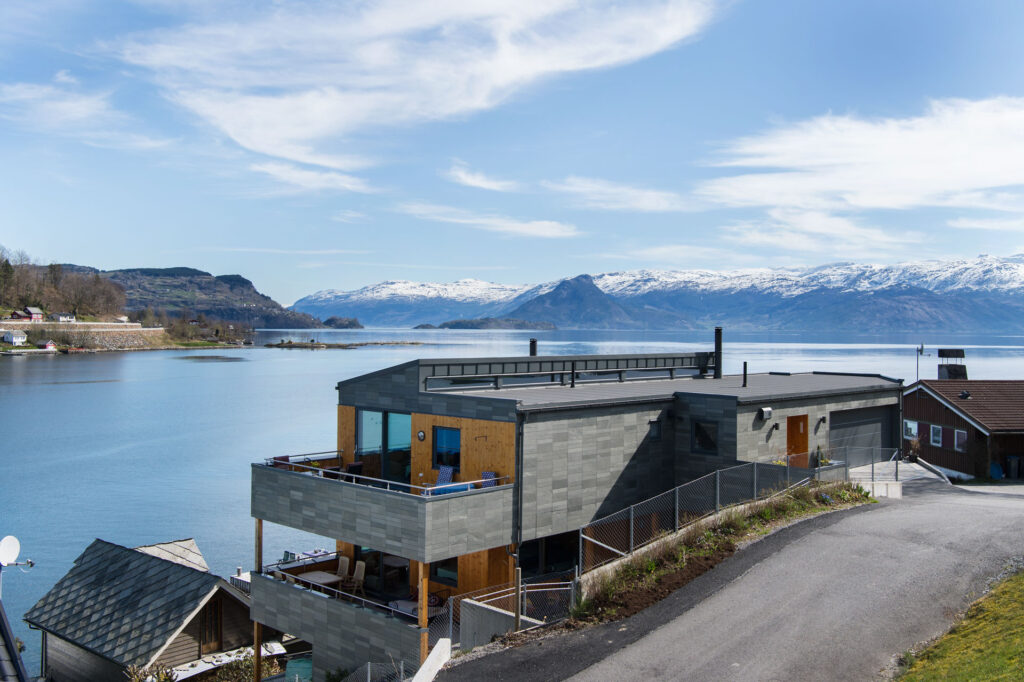
Even though Holstad is not a craftsman, he has attached all the tiles to the facade of his house with his own two hands. He thinks most people can manage it.
– It might not be for everyone, but if you’re relatively handy, plan well and take your time, then it’s doable. If you are going to do a lot yourself, my tip is to use a general contractor. Then you only have one contact person to deal with, and it will be easier for you, the foreman and the architect to cooperate well together.
The results speak for themselves. Throughout the day, the slate glistens in harmony with the water in Hardangerfjord. The facade produces a different symphonic interplay of colours from sunrise to sunset.
– That’s one of the reasons I chose Offerdal slate. It has a beautiful sheen, and there’s such great variety in its structure. You can find it with both rough and fine textures, and light as well as dark in colour. It’s also closest to the local slate here in Hardanger, says Holstad. See our selection of facade slates.
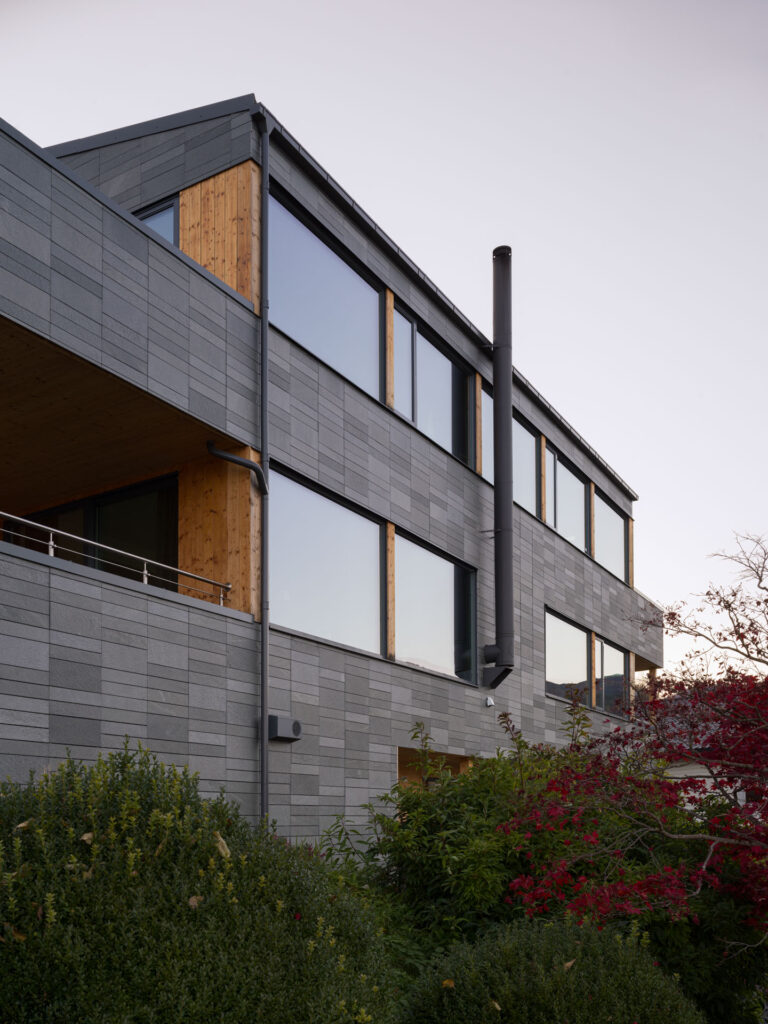
But it was more than just tradition and its appearance that made Holstad choose to clad his home in slate.
– Western Norway is known for its very severe weather. It can be raw and cold, and we get both easterly winds and sea spray on this side of the fjord. Slate can withstand all that, and I don’t even need to worry about maintenance. Over the course of these five years, I’ve probably spent an hour washing the walls off, and that’s all.
For Holstad, looking at the wall and knowing that it will never require any more work is a good feeling. He sometimes teases his neighbours by offering them his leftover paintbrushes.
– And this won’t hold true only during my lifetime. I built this house when my daughter moved back home. Now there are three generations of us living here, and it’s nice to think that this is endless and permanent’, he says, concluding:
– This 650 million-year-old slate can withstand a few hundred more years.
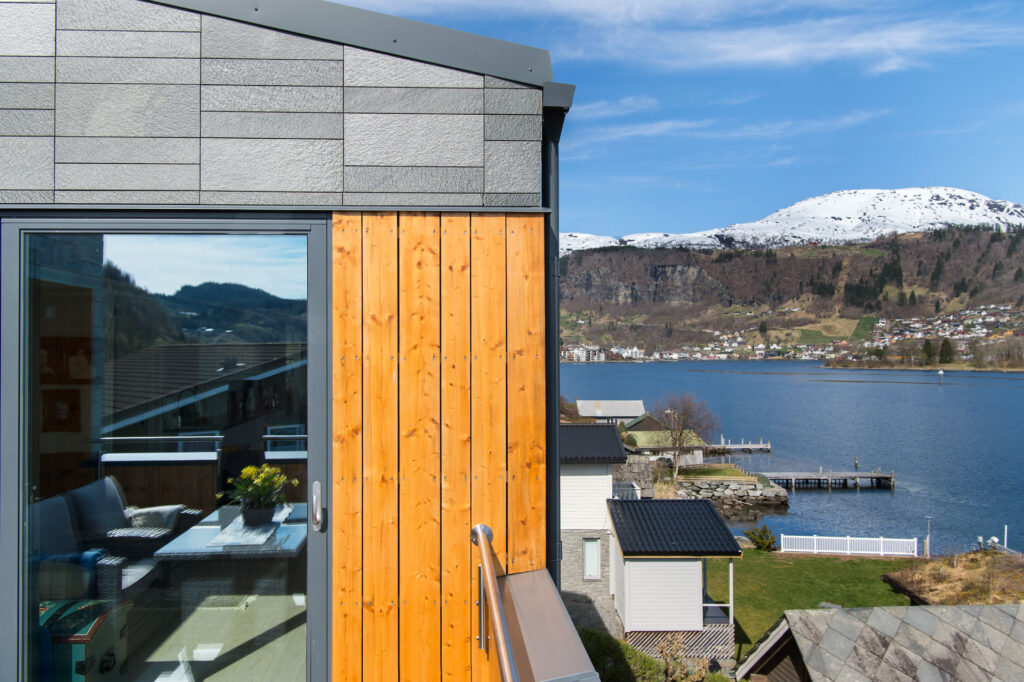
The architect who helped Holstad with the house, Lars Berge, spent his childhood in Kvam. So it was perhaps not so surprising that Berge also had a fondness for slate.
I’m from an old farm, a scant mile away from Holstad’s house, and we had 18 slate roofs on that farm alone. It’s something I really like, and I’ve laid two slate roofs myself in just the last few years. It’s like yoga for me, says Berge.
He had initially envisioned slates with an overlap on Holstad’s house, but he was quick to embrace the idea of mounting the slates flat.
– Mounting them flat was efficient in terms of the material used and it was a quick way of doing it. This way, we could divide the slabs so that they were easy to handle, and the end result is permanent cladding. It’s certainly possible for a lot of people to do this themselves.
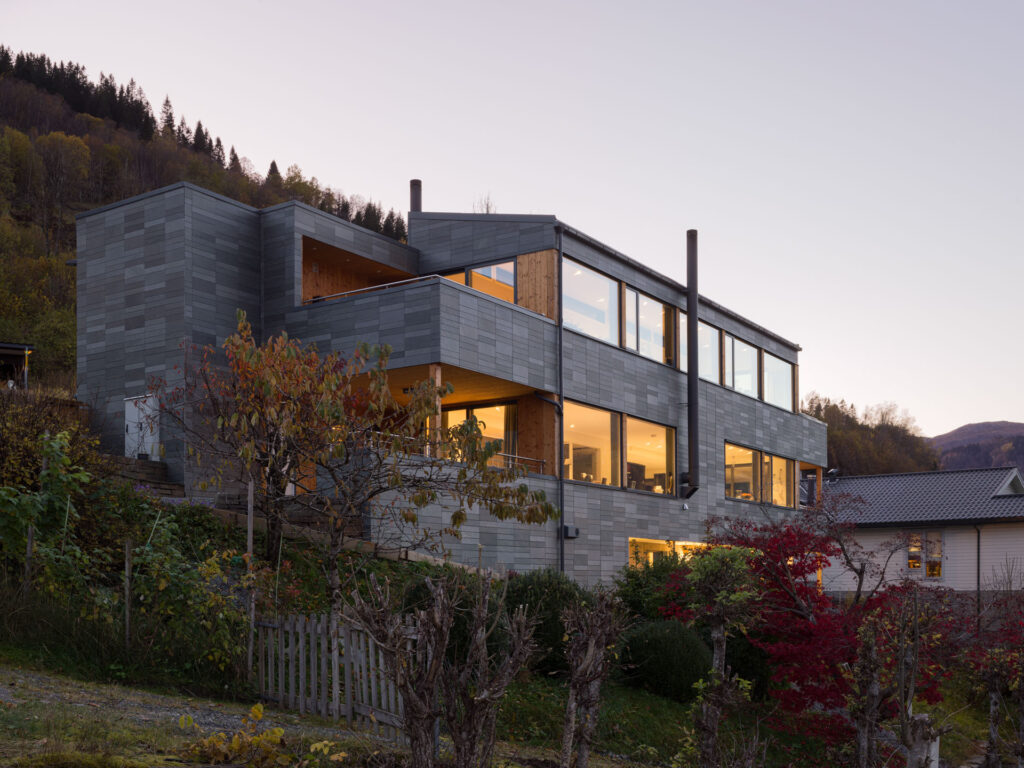
Berge is also proud of the finished result. When Holstad told him that the last slate was in place, he drove straight down to inspect.
– It just looked so good. Offerdal slate has this shine, and you get a facade that gives a lot. And then there’s a lot of talk about going “maintenance-free” these days. It is probably often associated with being a rather high-maintenance material, but this is truly maintenance-free, and anything but high-maintenance.
Looking back, the architect says he would gladly do it again. And he thinks that slate would be used much more often if people knew more about the material.
– What often happens is that uncertainty is priced into projects because slate is a relatively unusual material these days, and then the building ends up being quite conventional. But the fact is that it doesn’t have to be more expensive than other materials, at least not over time.
– Slate never needs to be replaced.
“Offerdal slate has this shine, and you get a facade that gives a lot. And then there’s a lot of talk about going “maintenance-free” these days. It is probably often associated with being a rather boring material, but this is truly maintenance-free, and anything but boring.
Lars J. Berger
Architect and landscape architect, LJB AS
